Paul Alsop
Published 5/9/2017
Please introduce yourself and tell us how you got into photography?
Kia ora, I'm a 37 year old Geordie (Ex-pat Newcastle, UK) living and working in the Bay of Plenty. My day job is a family doctor.
In 2000 I had an awesome tropical marine coral reef tank that was in my bedroom, I wanted to show it off the the wider community, but my camera that was set to 'auto' didn't quite replicate my view of my hard work, so I had to learn to get it out of Auto, this led me to landscape photography then onto portraiture.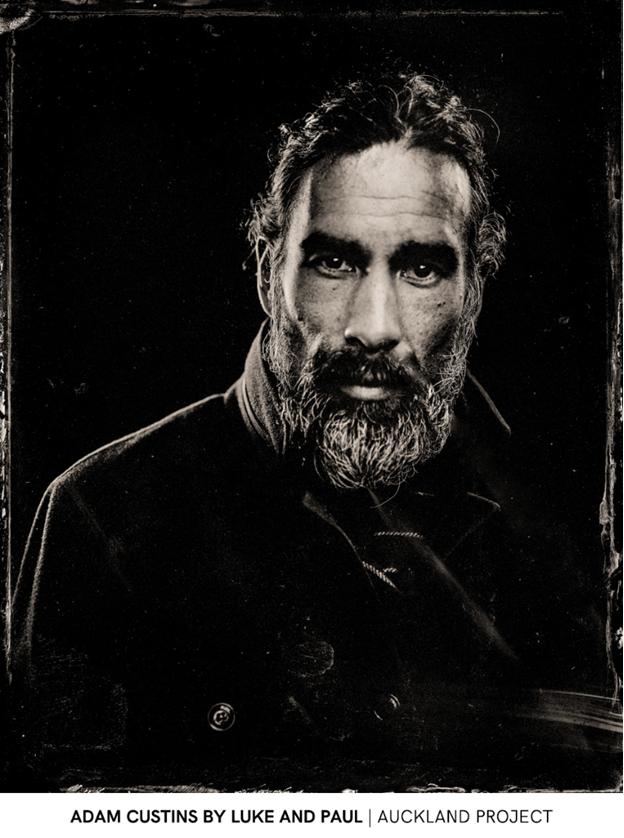
Being in the digital age, where 360 degree photos, smartphone photography, retouched images are the norm - what makes you pursue film photography?
This may sound a bit romantic, but I love the constant tactile nature of analogue processes and the rendered aesthetic of large format portraiture.
In 2010, I came across Richard Avedons 'In the American West' portraits and I really liked the style. I tried to emulate this style with digital, I found out that a) I couldn't and b) there was just too much choice in the digital darkroom for monochrome conversions, this led me to teach myself black and white film photography. Not long after, I came across a diptych of Kate Moss by Chuck Close, it was a Daguerreotype, the detail was phenomenal, there was nowhere to hide. I realised I really liked the brutal honesty of this sort of portraiture, so I set about researching how to make 'dags'. Once I realised that Mercury vapour is used to develop the image, I lost interest in favour of my health, and instead went on to research other processes that may yield similar results, this was when I found the Wet Plate Collodion process.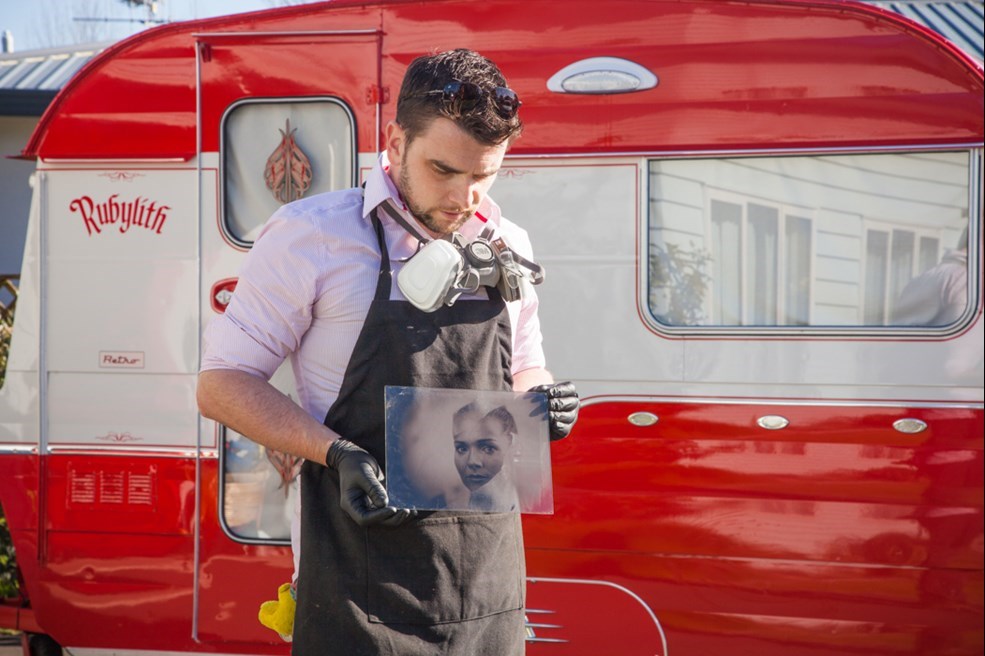
Tell us about some of the steps that you take to create your portraits.
Creating a portrait for me is a process that involves alot of planning, whether this be creative planning (lights / theme etc) or chemical planning (the wet plate process requires meticulous maintenance of chemistry to make clean plates). Once I've created a mood board for my subjects and prepared my chemistry I am ready to make portraits. It takes me 20 minutes to make 1 portrait and depending on the light I am using, it can mean the subject needs to stay still for anywhere between 5 to 30 seconds.
A plate made of either glass or metal is cleaned and buffed, a solution of collodion (gun-cotton, disolved in alcohol and ether) is flowed onto the plate, held in place with surface tension. The wet plate is then dipped into liquid silver, where it sits and reacts, turning into silver halide (the photosensitive stuff). The still wet plate is transferred to the back of a large format camera where an exposure is made. Once the exposure has been made, the wet plate is taken back to the darkroom, and under red lights is developed to a negative image, it is only then with the application of Hypo (fix) that a direct positive image appears on the plate.
A video I made to demonstrate the process while speaking at the NZIPP 2015 annual conference can be found here >> https://vimeo.com/134596304
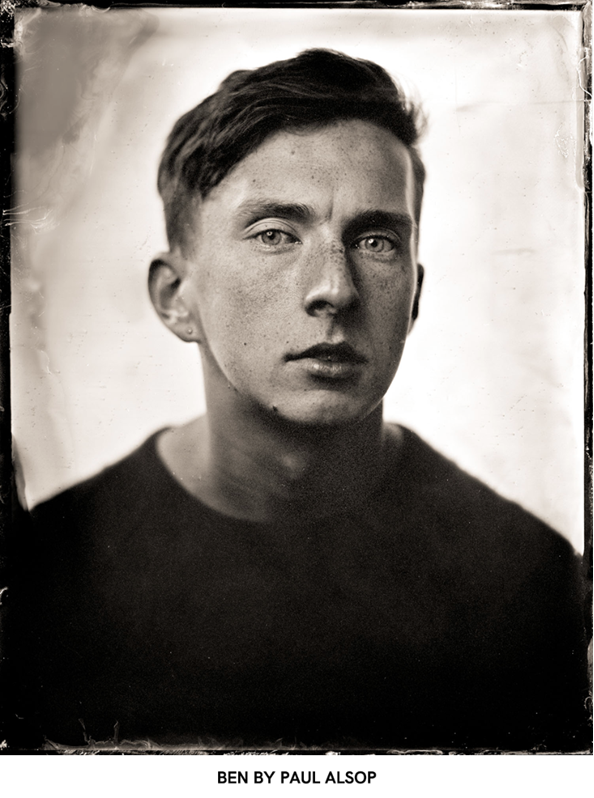
The Auckland Project is something that gained a lot of media coverage (worldwide) - how did it all start for you and what is the project about?
The Auckland Project (http://www.aucklandproject.com) is an ongoing collaboration with Luke White, who is the founder of Proof Agency (www.proofagency.co.nz) and a portrait photographer. Our aim is to capture Auckland creatives with the wet plate collodion process and modern studio lighting. It actually started as a question, my question was, how could I capture portraits with studio flash. The collodion solution has an ISO of between 0.5 and 2, I needed help from a lighting guru, this is how I found Luke when he was working at Kingsize studios (www.kingsize.co.nz). We started off testing the amount of power needed to make portraits and started to get results with 9,000 to 12,000 watt seconds of strobe. We started to make some awesome portraits and thus The Auckland Project was born. The portraits have been featured in the likes of Blur magazine, Petapixel and PDN (http://www.aucklandproject.com/press/)
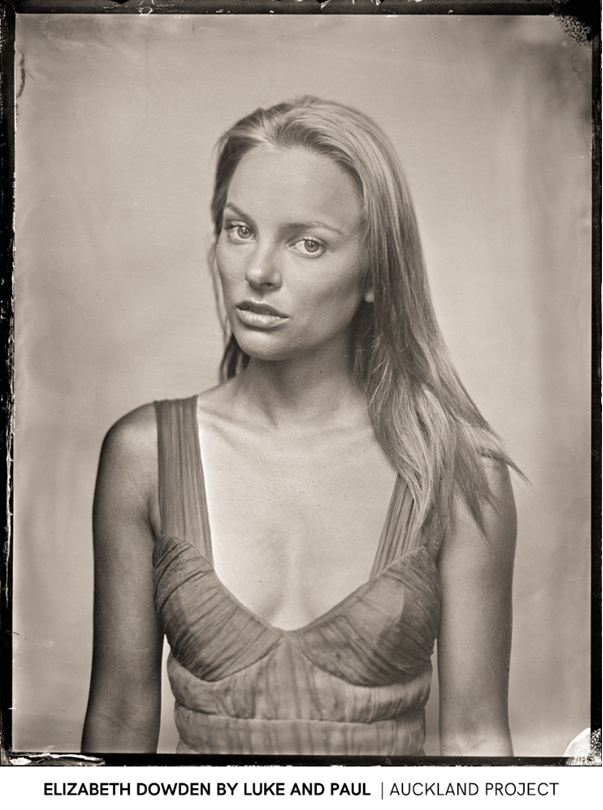
Your biggest source of inspiration?
Richard Avedon.
What equipment do you shoot with currently?
I mainly use my Toyoview monorail 4x5 studio camera. I have a home studio and I've accumulated 21,000 watt seconds of strobe power to use through various modifiers to shape my light. I also use a camera I built from scratch out of wood and brass and I have another camera which dates back from the early 1900s that I can shoot plates upto 10 x 12 inch.
How much preparation goes into each portrait?
ALOT!
Do you see yourself adapting to new technological advances - stepping into digital photography perhaps?
I actually was an early adopter of photoshop, before I picked up a camera I was using the earliest versions of Adobe software, I taught myself digital photography, then regressed back through time. If I go any further back in time, I will have to take up oil painting. In all seriousness though, I am not a prude, I don't frown on digital - I own a Canon 5D Mk2 and a Fujifilm XPro2, which I mainly reserve for family pictures.

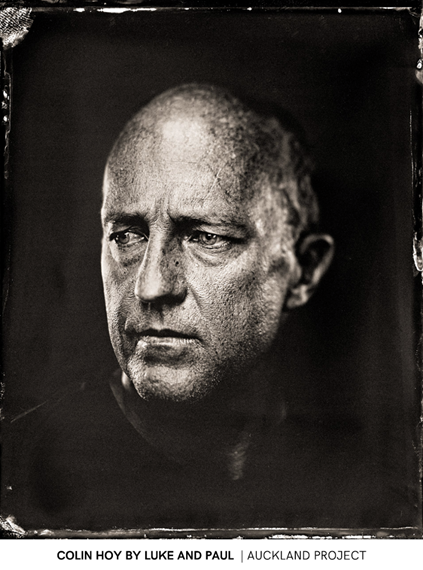
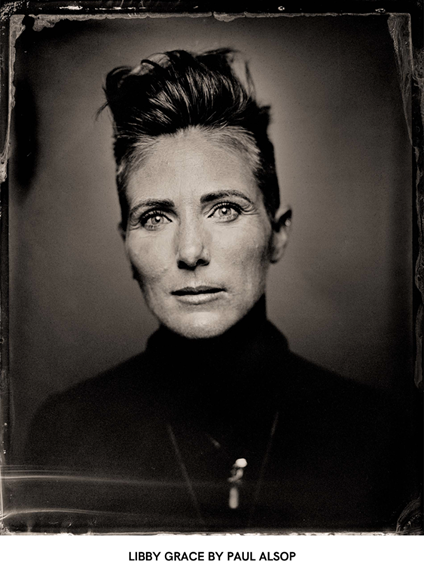
Your biggest achievement to date?
I was awarded 'Top Emerging Photographer for Australia and New Zealand 2017' by Capture magazine, that was pretty epic. The judging panel consisted of some amazing and inspirational photographers, including Dan Winters, Rankin, Tyler Hicks and Joel Grimes to name only a few. http://www.capturemag.com.au/profiles/capture-s-top-emerging-photographer-2017-paul-alsop
I also made a photobook, which was very well received, I entered it into this years NZIPP awards and it won a Gold award, top marks and I received some excellent feedback from the judging panel, which included Simon Devitt. Here is a video overview of it >> https://vimeo.com/227597076
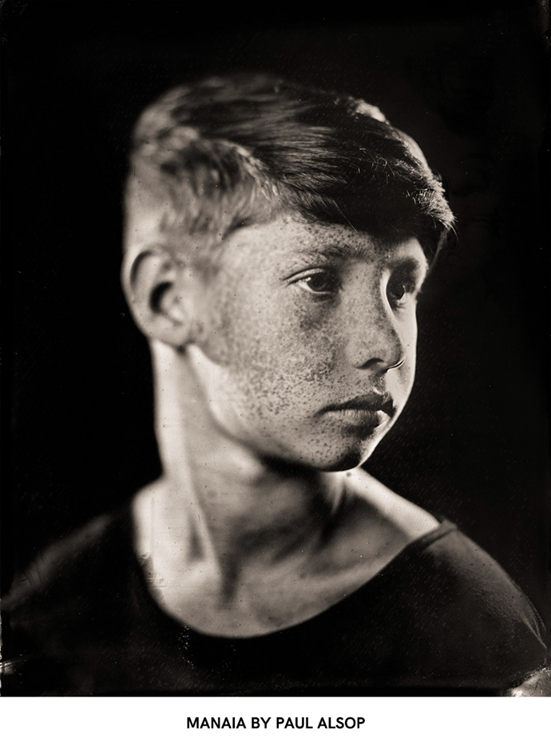
What do you have planned for the future - in terms of new projects, etc.?
I will be working with Luke again on the Auckland project, we have to work in 'spurts' as I live 3 hours away in the Bay of Plenty, so we usually set up camp for a weekend and bash through a few portraits. On a personal note, I am working on a project to make portraits for a large format exhibition, the details yet to be finalised.
Your biggest setback/challenge?
I sold my house when I lived in Thames, my garage was my darkroom. We have been renting since. The process is very messy and if I used the rental garage to make portraits and chemistry, we would never get our deposit back. After some research and a long hard think, I eventually decided to convert an old 1970 caravan into a mobile photographic darkroom. This was challenging as I failed wood work at school and know nothing about autoelectronics, I'm a quick learner however, and made it work. http://www.paulalsop.com/blog/2015/9/3/ruby-the-caravan
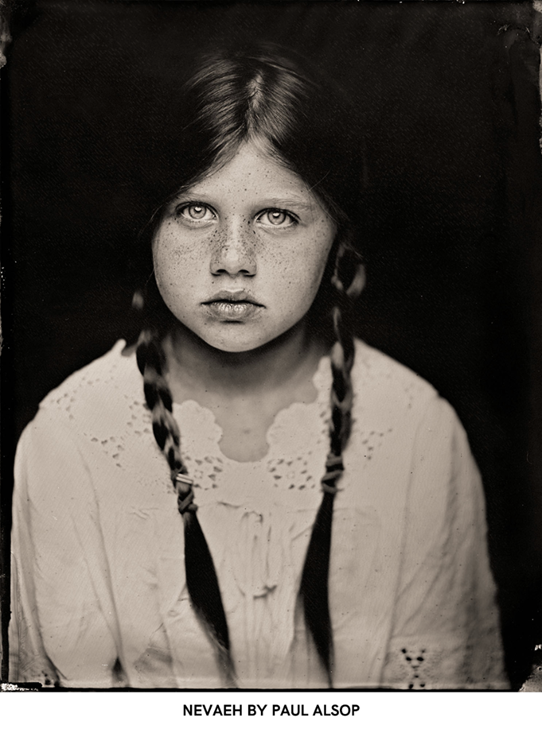
Advice for any budding photographers or students who are looking to follow your footsteps?
To get to where I have so far, I have encountered so many hurdles and it would have been so easy to have put the problems into the 'too hard pile'. I have been very driven to make wet plate collodion portraits and strived to find a way around every encountered barrier, or even just smash them down. I've always believed I could do something special with this process and it is bearing fruit for me now. To make portraits in this manner is time consuming, costly and frustrating, I have literally shed blood, sweat and tears having mainly taught myself. I would suggest doing a workshop in the process if a photographer or student was interested, and I'm more than happy to pass on details of the (very limited) workshops available in NZ.
Website: www.paulalsop.com
IG: @silver_sunbeams
FB: https://www.facebook.com/silversunbeams

 +9 529 5055
+9 529 5055